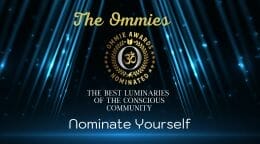Reality and Actuality

by William Bezanson
Everything that is real is not necessarily actual.
What is real to me may not be real to you. And what is actual may be different still.
Reality is what we perceive. Actuality is what truly is. I learned this distinction years ago in my Rosicrucian study, and the lesson has reinforced itself many times while looking around and observing the world. The phenomena that one experiences are real to that person. But they are not necessarily actual.
Examples of Reality and Actuality
Take a simple example. A woman may be too hot, but beside her a man is too cold. Those are their realities. But the environment is at a comfortable room temperature. That is the actuality, which is different than the realities.
As another example, it is quite obvious, and it has been obvious for millennia, that the sun revolves around the earth. Our whole mythology, art, literature, and language attests to that fact. That is our reality: sunup, sundown, sunrise in the East, “Rosy-fingered Dawn” (Homer), “For the sun is in his harbour” (Wordsworth); and there are many other examples from our culture. Then, around 500 years ago, Copernicus, Galileo, and others persuaded us that the heliocentric model was correct: the earth revolves around the sun, and the earth’s daily rotation about its own axis gives us the impression that the sun is revolving around the earth, thus giving us the yearly and daily cycles. So, we now realize that the actuality of the earth’s rotation explains the reality of the sun’s daily journey. The actuality explained by our intellects and scientific observations is different from the reality originating from our instincts and casual perceptions.
A richer example is evident in dreaming. What we dream can be very real, sometimes alarmingly so. We can wake up with our hearts pounding, breathing rapidly, convinced of the reality of what we were dreaming. Indeed, it was our reality for a time. Of course, we can then rationalize, after shaking ourselves awake, that it was only a dream. The events that we dreamed of were not actual events. The key point is that they were real ones for a time. But, reality in dreams does not necessarily correspond to actuality in wakefulness.
Another, very complex, example comes from Ufology, the study of unidentified flying objects (UFOs). What can we make of the actuality or reality of such phenomena? Are they actual or real…in other words, are they truly “objects” or just figments of our imagination? I am very impressed by C.G. Jung’s book, Flying Saucers: A Modern Myth of Things Seen in the Skies (New York, MJF Books, 1978, p. 131), in which he refuses to conclude anything about the actuality of UFOs due to his lack of full evidence, even after many years of interest. But he does speculate about their reality as a psychological compensatory fulfillment.
In short, people need to believe in UFOs, and therefore they see them. Writing in 1954, Jung states, “A psychic phenomenon of this kind [a subjective or collective vision, for an individual or a group; i.e., a hallucination—my bracketed words] would, like a rumour, have a compensatory significance, since it would be a spontaneous answer of the unconscious to the present conscious situation, i.e., to fears created by an apparently insoluble political situation which might at any moment lead to a universal catastrophe. At such times men’s eyes turn to heaven for help, and marvelous signs appear from on high, of a threatening or reassuring nature.”
So UFOs present the possibility of a significant example of the difference between reality (what we perceive) and actuality (what truly is the case).
No Need to Let Reality and Actuality Confuse You
On an even grander scale, consider the world’s many instances of mythology, folklore, fairy tales, creation myths, and sacred literature. They do not document actuality, but reality—or, more accurately, they do document actuality but in a coded, symbolic, mythological, esoteric way. Take just that last example, sacred literature. The Bible has to be one of the greatest hoaxes ever thrust upon an innocent mankind. To consider its stories as actual, rather than real, is misguided. To understand the Bible fully and deeply, one must be a native scholar of Hebrew and Greek, and read in the original languages, so as to appreciate its esoteric and subtle meanings. The Bible, as well as many other mythologies all over the world, presents a vast compendium of universal spiritual truth (or actuality) in the form of stories, allegories, myths, and symbols that primitive people, or the primitive aspects of evolved people, can relate to (their reality). The mistake is to confuse reality with actuality.
And that’s the main point of this article. If you can hold that distinction (reality vs. actuality) clear as you contrast your own world view with what actually exists, then such a model will help you understand and evolve toward truth. And truth is what you want to understand in order to comprehend the deep questions posed by life, and to focus on the responsibilities—personal, civic, and spiritual—that you have for your individual life.
Finally, when you consider that we are spiritual beings temporarily occupying physical bodies, we should consider our body to be real, but the spirit to be actual. Again, we often make the mistake of confusing reality with actuality.
Reality is one’s truth. Actuality is the truth!
About the Author
William Bezanson is a regular contributor to OMTimes. Further, he writes books on system design and world stewardship. He lives with his wife in Ottawa, Canada. His website is www3.sympatico.ca/bezanson1.
OMTimes Magazine is one of the leading on-line content providers of positivity, wellness and personal empowerment. OMTimes Magazine - Co-Creating a More Conscious Reality








